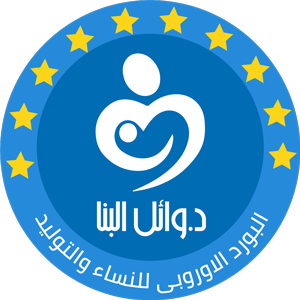Twin to Twin Transfusion Syndrome
Twin to Twin Transfusion Syndrome (TTTS) is a prenatal condition in which twins share unequal amounts of the placenta’s blood supply resulting in the two fetuses growing at different rates. 70% of identical twins share a placenta, and 15-20% of these pregnancies are affected by TTTS. TTTS is not related to anything the mother did or did not do during pregnancy.
Identical twins share one placenta. Most commonly, they are in different sacs of fluid, the amniotic sacs. This type of twin pregnancy is called monochorionic (one placenta) and diamniotic (two sacs). In monochorionic, diamniotic twins (mo-di twins), there are shared blood vessels, which run from one twin to the other on the surface of the placenta. Most often the net flow of blood between the twins is fairly even, but when there is an imbalance of blood flow across these blood vessels, such that one twin is getting more blood supply than the other, then TTTS can occur. The fetus with more blood flow is called the recipient twin, and the fetus with less is called the donor twin.
Because the donor twin has less blood flow, this baby grows slower and is smaller. The baby acts dehydrated and cannot make much urine. Thus, the bladder is small or invisible and the amniotic fluid begins to decline. The recipient twin, however, has too much blood flow. It grows faster and is larger than the other twin. The recipient baby tries to urinate the excess fluid from having more blood, so it has an enlarged bladder and too much amniotic fluid.
The Stages of TTTS
There are five stages of TTTS.
Stage 1: There is an imbalance of amniotic fluid, with a small amount (<2cm) around the donor twin and a large amount around the recipient twin (>8cm). The twins are often more than 20% different in size.
Stage 2: The bladder of the donor twin is not visible or it does not fill with urine during an ultrasound exam.
Stage 3: The imbalance of blood flow starts to affect the heart function in one or both babies. This is seen in abnormal blood flow in the umbilical cords or hearts of the twins.
Stage 4: The imbalance of blood flow causes signs of heart failure in one of the twins.
Stage 5: One or both of the twins has passed away from severe TTTS.
For Stage 1 cases, observation may be all that is necessary, but for Stage 2 or higher cases, fetal surgery may be the best option.
How is TTTS diagnosed?
A routine prenatal ultrasound will show whether there are twins in a pregnancy, and we can see if the twins are identical and sharing a placenta. This is a critical determination because if so, your babies are at risk for developing TTTS (15-20% risk).
we recommend that screening ultrasounds be performed every two weeks between 16 and 24 weeks of the pregnancy. If signs of TTTS develop, such as different amniotic fluid levels or growth differences, then ultrasounds can be performed more frequently to determine if the TTTS is really progressing. We will determine what stage of TTTS is present. A fetal echocardiogram (echo) gives us much more information about the heart function and anatomy. Your treatment options depend on the stage of TTTS, and range from observation to placental laser surgery.
How is TTTS managed during the pregnancy?
A highly specialized maternal-fetal medicine physician should monitor TTTS and determine if the stage is progressing. Progression can occur very rapidly, over a few days. We examine each case closely, and our team of doctors and nurses explain the options for treatment of your specific case. The options include:
Observation Through Frequent Ultrasounds
Stage 1 cases may not require intervention, but it is important to monitor the twins’ progress frequently and closely, to rule out progression to stage 2 or beyond. At the Cardinal Glennon St. Louis Fetal Care Institute, we often perform ultrasounds every week.
Fetoscopic Laser Photocoagulation
In cases of TTTS of Stage 2 or higher, at approximately 16-26 weeks of gestation, surgeons use a laser to block the blood vessels that communicate between the two fetuses. The surgeon inserts a pencil-tip-sized fiber-optic scope in the mother’s uterus and examines the entire placenta to find the crossing blood vessels.
Once these are all mapped, a tiny laser fiber is inserted and laser energy is used to stop the blood flow between the twins. Separating the twin blood flow is like functionally separating the placenta, allowing each twin to develop independently.
Amnioreduction
This procedure removes the excess fluid from around the larger twin, reducing amniotic pressure and reducing the risk of preterm labor. This is usually performed with fetoscopic laser photocoagulation.
We will explain the risks and benefits of the various options, considering your specific case. Although untreated cases of TTTS can become severe, threatening the lives of both twins, fetoscopic laser photocoagulation can completely cure TTTS.
How does TTTS affect my baby after delivery?
Twins with untreated advanced stages of TTTS during pregnancy usually do not do well after delivery—there is a 90% risk of fatality and, for those who do survive, a 15-50% risk of neurologic handicap.
The good news, however, is that there are many treatment options during pregnancy that can significantly improve survival and lower the risk of neurologic handicaps. If your twins’ TTTS has been successfully managed and treated during pregnancy, there is a much better chance that they will be healthy babies.
We understand that TTTS can be a scary diagnosis. That’s why we’re available to help 24 hours a day, 7 days a week.
